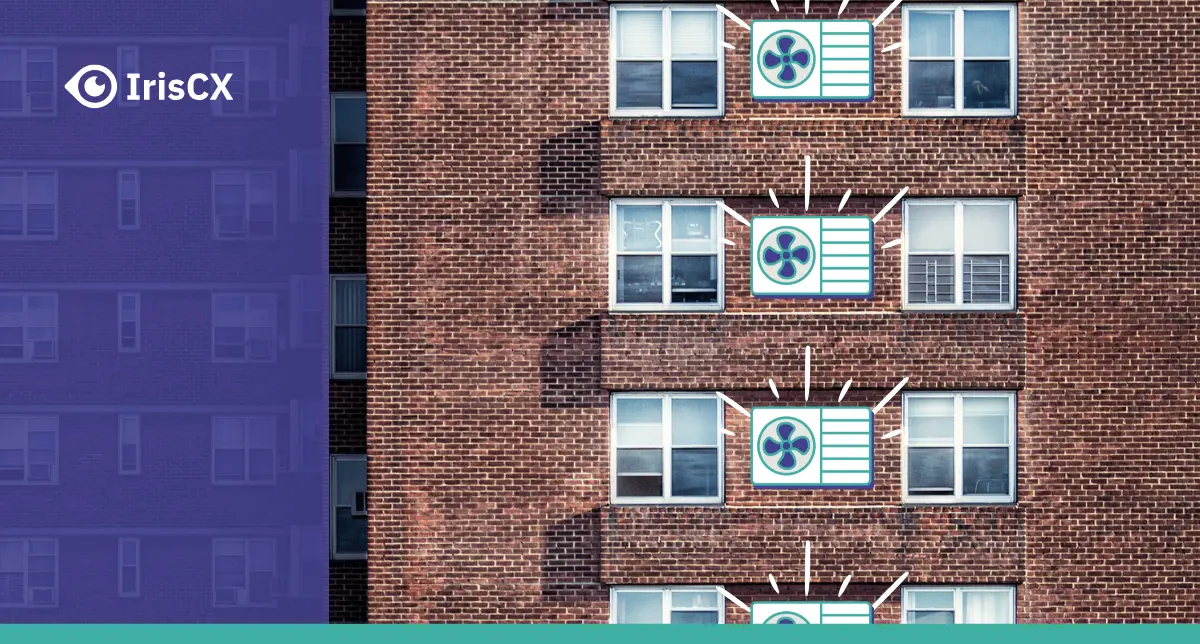As of July 10, 2025, Austin’s groundbreaking air conditioning mandate is now in full effect, and rental property owners and managers in that city must adapt their operations to comply.
Every habitable room in residential units must now maintain temperatures at least 15 degrees below outdoor temperature, with strict measurement protocols and no grace period for compliance.
For property managers across Austin—and those watching from other markets—this is a significant regulatory requirement. It’s also a preview of what’s likely coming to other hot-weather markets and an opportunity to build operational advantages that extend far beyond strict compliance.
The mandate’s specifics are demanding: inspections between 2-6 PM during the hottest part of the day, temperature measurements at multiple points in each room, and violations triggered if even a single habitable room fails to meet requirements.
For properties still working to achieve compliance, or those managing ongoing obligations, I encourage you to raise your sights beyond simply adapting. This AC challenge can actually be turned into a strategic advantage.
The Cost of Non-Compliance Goes Beyond Fines
Austin’s mandate creates compliance risks that extend past the immediate regulatory requirements. Property owners face a pressure cooker of operational challenges:
Complaint-driven enforcement amplifies resident friction
Unlike routine inspections, Austin’s enforcement is primarily complaint-driven, meaning unhappy residents can trigger violations that result in citations and legal complications
Thorough temperature requirements
Inspectors measure at three specific points in each room—center, and two feet from two exterior walls—with all readings taken three feet above floor level. If any single measurement fails, the entire unit receives a violation.
Liability extends beyond resident comfort
Even when residents are responsible for AC maintenance under lease terms, property owners remain liable for violations, creating a disconnect between responsibility and accountability.
Market reputation impact
In Austin’s competitive rental market, properties known for problems with AC compliance risk resident churn and difficulty attracting quality tenants, particularly during peak summer months.
Maintenance staffing strain during peak compliance periods
The mandate creates urgent, time-sensitive work that requires immediate response during the hottest part of the day. Properties must either maintain expensive on-call capacity or risk violations while waiting for available technicians, creating a staffing dilemma that impacts both labor costs and compliance reliability.
Consider this scenario: A resident calls on a 105-degree day reporting their bedroom isn’t cooling properly. Under the mandate, every habitable room must meet the 15-degree requirement. Without proper diagnostic capabilities, property managers face the choice between expensive emergency service calls or risking a compliance violation that could result in legal action.
Why Traditional AC Management Falls Short Under the Mandate
The mandate exposes critical weaknesses in conventional approaches to air conditioning management:
- Reactive rather than proactive response: Traditional property management waits for residents to report problems, but the mandate requires consistent performance across all habitable rooms, whether occupied or not.
- Limited diagnostic capabilities: Phone-based troubleshooting can’t provide the visual context needed to quickly assess whether an AC issue requires immediate professional intervention or can be resolved through resident guidance.
- Inefficient resource allocation: Without proper triage capabilities, property managers either over-respond with unnecessary service calls or under-respond and risk violations.
- Documentation gaps: The mandate’s strict requirements mean property managers need clear documentation of AC performance and any remediation efforts, but traditional approaches often lack systematic record-keeping.
A common example: A resident reports their living room “isn’t getting cold.” Without visual confirmation, managers must guess whether this requires an emergency HVAC call or might be resolved through simple troubleshooting like checking thermostat settings or air filter condition.
Remote Diagnostics: Your Compliance Advantage
Forward-thinking property managers are discovering that remote visual diagnostics transforms mandate compliance from a liability into an operational advantage.
Visual diagnostics give maintenance teams immediate assessment capabilities. They can quickly determine whether reported AC issues represent genuine compliance risks or can be resolved through guided resident troubleshooting.
Rather than waiting for complaints, remote capabilities enable proactive system monitoring. Regular check-ins with residents identify potential issues before they become compliance violations.
When professional service is required, technicians arrive with specific visual information about the problem, bringing appropriate parts and completing repairs in a single visit. This capability leads to enhanced first-time fix rates.
Every diagnostic session creates a timestamped, visual record of AC performance and any remediation steps taken, providing crucial documentation for compliance defense if questions arise.
For more insights on how technology is transforming property management compliance, read our analysis of California’s AB 2801 security deposit requirements.
Real-World Mandate Compliance Scenarios
Remote diagnostics proves invaluable in common mandate compliance situations:
Scenario 1: Resident reports their bedroom “won’t cool down” on a 108-degree day. Through visual inspection, maintenance staff can immediately verify whether the AC unit is running, check for proper airflow, and guide the resident through basic troubleshooting—all while documenting the interaction for compliance purposes.
Scenario 2: During peak summer, multiple units report cooling issues. Remote triage allows property managers to quickly identify which situations require immediate professional response (true system failures) versus those that can be resolved through guided maintenance (dirty filters, thermostat issues).
Scenario 3: An inspector arrives for a complaint-driven inspection. Properties with documented remote diagnostic records can demonstrate proactive maintenance efforts and proper response to resident concerns, potentially mitigating violation severity.
Building Your Mandate-Ready Operation Strategy
Here’s how to implement a compliance-focused AC management strategy:
Step 1: Establish proactive communication channels
Create systems for regular resident check-ins during extreme heat periods, using remote visual capabilities to assess AC performance before problems escalate to compliance risks.
Step 2: Develop rapid response protocols
Implement visual triage processes that can quickly distinguish between true emergencies requiring immediate professional response and issues that can be resolved through guided resident action.
Step 3: Create compliance documentation systems
Ensure every AC-related interaction generates proper documentation, including visual records, timestamps, and remediation steps taken.
Step 4: Train staff on mandate-specific requirements
Educate your team on the mandate’s specific measurement requirements and compliance timelines, ensuring they understand when situations require immediate escalation.
Step 5: Build vendor partnerships with diagnostic information
Develop relationships with HVAC contractors who can receive detailed visual information about problems, improving response times and first-time fix rates.
The Competitive Advantage of Compliance Excellence
Properties that excel at mandate compliance gain significant market advantages:
Tenants in Austin now expect consistent AC performance as a basic requirement. Properties that deliver this reliability see improved retention rates and positive word-of-mouth referrals.
Remote diagnostic capabilities garner operational efficiency gains. They reduce unnecessary service calls, lower maintenance costs, and enable better resource allocation during peak summer periods.
As the mandate creates compliance challenges for some properties, those with superior AC management systems can market their reliability as a competitive advantage.
The operational capabilities built for Austin’s mandate prepare property managers for similar requirements that may emerge in other hot-weather markets.
Related reading: For comprehensive strategies on reducing truck rolls, see our guide on Emergency AC Repair Strategy: How Remote Diagnostics Can Save Your Summer Maintenance Season.
Looking Beyond Austin: The Future of Air Conditioning in Rental Properties
Austin’s mandate represents the beginning of mandatory air conditioning requirements in rental properties. As climate change intensifies summer heat across the Sun Belt, similar regulations are likely to emerge in markets like Phoenix, San Antonio, and Houston.
Property managers who build robust AC compliance capabilities now position themselves advantageously for future regulatory changes while creating immediate operational benefits. The investment in remote diagnostic capabilities pays dividends through reduced maintenance costs, improved resident satisfaction, and streamlined compliance management.
The mandate has arrived, and the enforcement mechanism is in place. The question for Austin property managers—and those watching from other markets—isn’t whether to adapt, but how quickly they can turn compliance obligations into competitive advantages.
Don’t let Austin’s AC mandate catch your operation unprepared. The combination of strict requirements and complaint-driven enforcement means that excellence in AC management is no longer optional—it’s a fundamental business requirement.
Take Action Today
Ready to transform your AC compliance challenges into operational advantages? Schedule a demo today and see how IrisCX can streamline your property management processes, ensure mandate compliance, and protect your bottom line. Contact us to learn more about building a mandate-ready operation.




